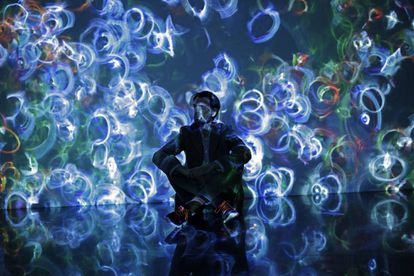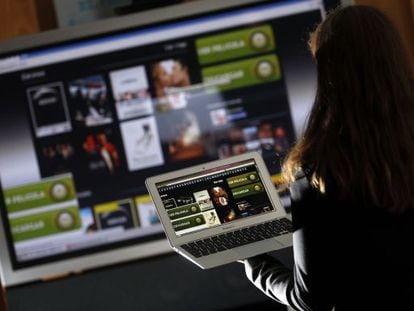Battle lines drawn over new European copyright law
Critics are sharply divided over upcoming reforms to the EU’s intellectual property framework

The issue of copyright is a veritable hornet’s nest. Even a small change in the rules can stir up controversies, accusations and apocalyptic prophecies. Chaos prevents clarity in a subject experts describe as incredibly complex by its very nature. For that reason it is hardly surprising that reforms on the scale of those being prepared by the European Union (EU) have unleashed a storm of opinions both in favor and – above all – against the changes.

The European Commission (EC) announced its proposals in September, among them establishing exclusive rights for media outlets in terms of authorizing or prohibiting news aggregators from using their online content, and obliging platforms such as YouTube to use an anti-pirating filter. Since that announcement, media firms, journalists, professors, politicians, lobby groups, technology giants such as Google and organizations defending online rights have exchanging fire over their views on the project being examined by the European Parliament. Millions of principles and millions of euros are at stake.
Our objective is to create a more level playing field Andrus Ansip, European Commission Vice President
The starting point is one of the (few) certainties: the current directive approved in 2001, or back in the prehistory of the internet. Brussels now wants an update.
“We have two opposing starting points: we have to open up the market for culture but we also have to protect the creators. We can only achieve that through debate,” says Tibor Navracsics, the European Commissioner for Education, Culture, Youth and Sport.
“Our objective is to create a more level playing field,” says Andrus Ansip, Vice President for the European Commission and responsible for the equally fraught Digital Single Market strategy.
The road map was made public in September. It includes, among others, the controversial article 11. “This creates a neighboring right that media editors haven’t had until now,” explains Raquel Xalabarder, professor in intellectual property at the Open University of Catalonia (UOC). Protection under the article will last 20 years and will only be valid online. As such, legislators hope to help media outlets negotiate financial compensation with news aggregators like Google News, who use part of their content for free, and to protect quality journalism.
“For newspapers, it’s a good proposal. We are only asking that they don’t take fragments of our news stories without authorization,” says Miguel Ortego Ruiz, Assistant to Operations General Management with the Spanish Newspaper Publishers’ Association (AEDE).
The Spanish of German model?
The reform planned by the European Commission has been compared with the laws approved by Germany and Spain. But there are a number of differences. “What the EU is proposing doesn’t exist in any country. There have been similar measures. The neighboring right created in Germany in 2013 was in force for a year and protected digital and printed formats against commercial use. The 2014 reform in Spain took the opposite tack: it authorized aggregators to use fragments of protected works and established compensation for media outlets,” explains professor Xalabarder.
In both cases, the results were controversial. In Spain, Google News left, never to return, something that could now happen in the EU as a whole. After an impasse lasting years, Cedro, the Spanish body that manages copyright for authors and publishers of books and newspapers, is negotiating possible tariffs with aggregators.
In Germany, Google refused to look at the licenses option and limited itself to asking media outlets who wished to be linked to from the aggregator to submit a request. Many of the country’s major newspapers removed their content from Google News but changed their mind after they saw a serious drop-off in online traffic
The party facing the most damage from the new legislation believes, of course, that the opposite is true. “If someone has to charge for something to be published via a third party, then that is a business decision and not a legal one. We also disagree that the current situation is unjust: aggregators bring in a lot of traffic, which is being monetized by means of advertising,” says Antonio Vargas, Public Policy Manager for Google Spain.
Referring to aggregators having a priori control over possible pirate content on their platforms, Vargas says: “If YouTube had to take responsibility for all of the content it hosts it wouldn’t be able to offer the service it currently does. More than 400 hours of videos are uploaded to the platform every minute!”
The blanket opposition continues: the AEDE argues that media outlets lose traffic because many users only read a headline in the aggregator and don’t access the news item. Google counters that this thesis has not been demonstrated by any studies.
Opposition to the directive has even generated a strange alliance between Julia Reda, a member of the European Parliament for the European Pirate Party, the Creative Commons organization, the Berlin State Government, 37 lecturers from some of Britain’s top universities, and a group of intellectual property experts who have published a document describing the neighboring right as “unnecessary and unwanted.” The German Journalists Association (DJV) has outlined the “12 lies” perpetrated by editors while various media outlets have come out against the AEDE criteria. In Spain, internet rights group Xnet and other online activist organizations have launched an online campaign against the directive.
Their arguments are as numerous as they are strong. They believe that given that media outlets already hold the copyright ceded to them by journalists and photographers, a “second” protection for these companies is not necessary and only complicates the panorama. Some critics argue that the directive could even weaken the position of journalists against their employers or that the reform could reduce access to information and people’s right to cite works. Meanwhile, both Reda and Xnet have highlighted another risk: that the directive will affect any user who wishes to link to content and provide a summary of just a few words – someone, for example, sharing a story on Facebook. The Commission has promised that a simple link is excluded in the reform as this does not constitute public communication. This has already been established by the Court of Justice of the European Union in the celebrated Svensson case. But where does that leave the so-called “snippet,” a link with a short piece of content?
We have to open up the market for culture but we also have to protect the creators Tibor Navracsics, European Commissioner for Education, Culture, Youth and Sport
“Media outlets can concede the license to one platform and not to another according to their preferences. Or an aggregator could obtain a more favorable position by paying more. It could be that end users are the ones who suffer,” says Xalabarder from the Open University of Catalonia. She also points out the risk to small media companies, “which are not in a position to license their content with the same ease as larger firms.”
All parties from both sides of the debate are hoping to be heard in the European Parliament, where the text is at the committee stage. Recently, MEP Therese Comodini Cachia with the Group of the European People’s Party, called for Article 11 to be eliminated. Other parliamentarians want it to be watered down. A Culture and Education committee draft suggests limiting the protection to three years, and limiting it to professional journalistic content and platforms that provide links for commercial reasons. Negotiations could last until summer and one person interviewed predicted the directive will be approved this coming fall. After that, it will be at least a year until the reform is incorporated into the legislation of member states. That means a total of two years. This begs one last question: what will have changed in the digital world by then?
English version by George Mills.
Experiences in cooperation
There are currently a number of examples of cooperation between media outlets and technology giants. EL PAÍS has gone down this road with Google with projects such as the Digital News Initiative, a joint initiative headed by Google with eight European media outlets, among them EL PAÍS, Financial Times, The Guardian, Les Echos, La Stampa, NRC, Die Ziet and Frankfurter Allgemeine. The aim of the project is to support quality journalism and promote the growth of a more sustainable news ecosystem by using technology and innovation.
One example of this the AMP (Accelerated Mobile Pages) project, an open-code format developed by Google and media outlets that is designed to improve the experience of users and consumers of information from mobile devices based on the premise that editors keep control of their income. Then there is the Facebook Journalism Project, launched in January of this year, which aims for collaboration in the development of new products, formats and technical tools as well as journalist training and tackling fake news.












































